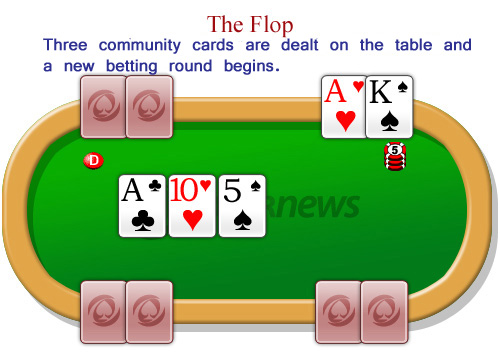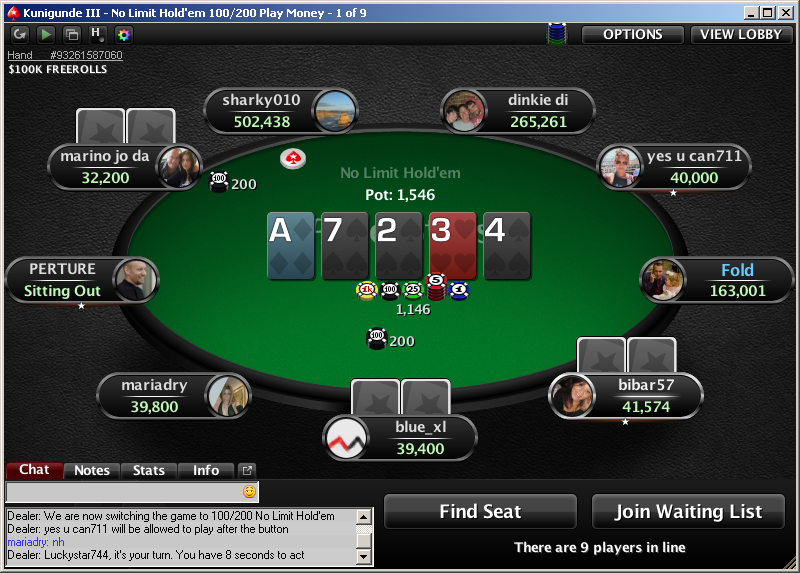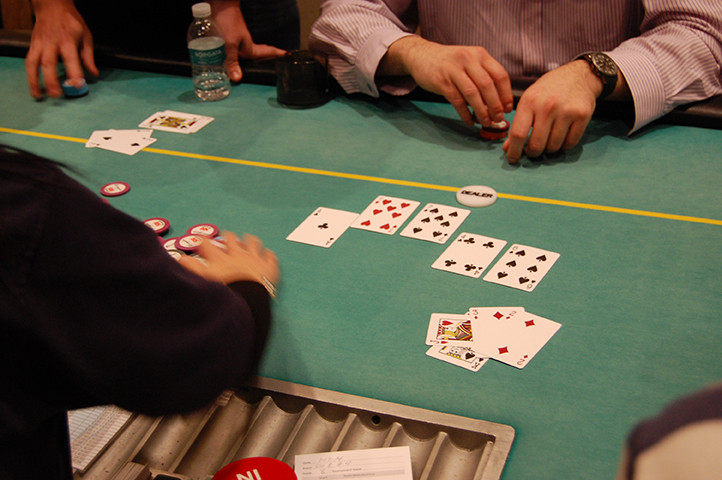Omaha is usually played with no ante, but with blinds. When there are more than two players, the player to dealer's left places a small blind, and the next player to the left a big blind. The big blind is equal to the minimum bet and the small blind is typically half that amount. No Limit Omaha: Rules & Strategies. A relatively less popular version of the poker game of Omaha is no limit Omaha. Due to the fact that the game plays so big even in it's pot limit version, it is not very common to see players playing no limit Omaha.
Rules of the Game
Sep 15, 2018 For the past two decades, No-Limit Texas Hold’Em (NLHE) has increased dramatically in popularity. In addition to being a relatively easy game to learn, there is also the potential for some huge pots and exciting games. To become a big winner, however, you must have a thorough understanding of the game and No-Limit Texas Hold’Em rules.
Pot Limit Omaha (PLO) is the second most popular poker game in the world. Ten years ago it was somewhat difficult to find a live game going outside of Europe but now many card rooms spread PLO regularly. While it will never surpass No Limit Hold’em (NLHE) in popularity it will only increase its market share as the years move forward. Everyday people are converting to PLO as their game of choice.
It’s not hard to figure out why this is the case as PLO is an action game where all players get dealt four cards and possibilities abound. One caveat, however, is that you must use at least two of your hole cards in your final hand. In other words if you have A♥ K♦ J♠ J♣ you don’t have an ace high flush when the board shows four hearts. Also you do not have a full house if the board is K♥ K♠ 5♣ 5♦ 2♥. So if you are new to the game make sure you have these fundamentals firmly in mind before heading out to the tables as the game is enough intimidating on its own for inexperienced players.
Basic Strategy
Starting hand selection is incredibly important; mediocre starting hands tend to build mediocre holdings and the second best hand can cost you a lot of money. There is no place ticket in PLO; the second best hand always loses the most money.
The premium hands have both nut potential and have all four cards working together such as A♥ K♥ Q♠ J♣, A♥ A♦ J♠ T♠, and K♦ Q♦ J♣ T♣. These hands play very well heads-up or multi-way but obviously hands like this do not grow on trees. Hands like A♥ 9♥ 8♠ 7♣, T♥ 9♥ 8♠ 6♣, and Q♦ Q♠ T♠ 9♣ are also quite good because you tend to either hit a favorable flop and when you don’t you are usually able to get out without committing too many of your troops.
This is not a split pot game so run downs with no gaps and at least one suit down to around 8♠ 7♠ 6♥ 5♣ has a lot of value in this game. It is important, however, to not overrate any rundowns lower this this because you are beginning to run into the danger of continually running into higher straights. Being suited at least once is important because when you share a nut straight with someone else it can give you the highly desired free-roll. If someone happens to hold a higher flush draw then you suits act as blocking defense.
Pot Limit Omaha is too complicated of a game to get too in depth here but here are some quick warnings that new players should heed so they can learn the game without paying too high of a tuition:
- In a multi-way pot you always want to be drawing to the nuts. For example, drawing to a jack high flush with five players in the pot is a recipe for disaster.
- Beware of medium and low pairs and the sets that they make. You will run into higher sets more often than you think and they are big time money losers. Starting hands with them should most often be folded, although there are exceptions such as A♥ A♦ 2♣ 2♠ and T♥ 9♥ 8♠ 8♣. If you happen to flop a set of deuces or eights with either of these hands you must be aware that you could be in peril. Certainly you do not have to automatically fold but recognize that your hand is not as strong as it is in NLHE.
- Straight draws even with those with many outs (i.e. wraps) are severely devalued when there are two suits on board. You can call a bet, but if you if raise that can allow a player with a set, two pair and a flush draw, or a flush draw that shares some of your straight outs to reopen the betting and your holding fares very badly against such hands.
- Do not overvalue dry aces (e.g A♥ A♠ 7♦ 3♣) and put too much money into the pot pre-flop especially when stacks are deep. If you give away the fact that you have aces you allow your opponents to more or less play perfectly against you. Of course if you have premium aces you should escalate the pot for value but make sure other hands without aces are in your range.
- Many new players are enamored with the “Bare Ace Bluff”. This is the play where you only have one ace of a suit when there are three more on board and play too aggressively every time in the hopes of getting everyone to fold because they can’t have the nuts. This play should be made on occasion but overdoing can be very costly as many players are on guard for such a play and hate to be bluffed out.
- Many beginning resources go out of their way to tell you that hands with big pairs and nothing much else such as K♥ K♠ 5♦ 4♣ are unplayable because your hand is not working together. While it is true that this holding is far from a premium holding you should definitely try and see a flop unless the pot is raised and re-raised and it costs too much as a relative portion of your stack to consider calling. Top set is a premium hand with which you typically have both the best hand and the best draw which is the best situation in poker. In raised pots you can sometimes stack an opponent who commits too much money with a lesser hand and can’t give it up.

Further Learning
Pot Limit Poker: The Big Play Strategy by Jeff Hwang, (Rating 10/10) – This book is an excellent resource on learning how to best approach live full ring PLO games. In addition, it also has excellent beginning material on Pot Limit and Limit Omaha Eight or Better.
Advanced Pot-Limit Omaha Volume I, Volume II, and Volume III by Jeff Hwang, (Rating 7/10) – These books are also highly valuable because they have some nuggets of very good information and have an immense amount of examples yet they appear to have a few shortcomings. In many examples Jeff advocates calling re-raises too much with dominated hands especially out of position. In other situations he is also putting in too much money with very marginal hands in an attempt to isolate or is calling too wide pre-flop in an attempt to play “small ball”. Often you will end up in a three way pot with a very marginal hand and while position does help it’s often the case you are up against two better hands.
Mastering Pot-Limit Omaha: The Modern Aggressive Approach by Herbert Okolowitz and Wladmir Taschner (Rating 8/10) – If online PLO is your game then this resource is for you. Great information and advice for those that play the more aggressive and advanced online games that tend to feature six-handed play.
- Omaha High - Players and Cards - Deal and Betting - Showdown - Variations
- Five Card Omaha - Six-Card Omaha
Introduction
Omaha is a fairly recent poker variant. It seems that it was first introduced in the 1980's, but it quickly achieved great popularity among casino and tournament players. In Omaha, each player receives four private cards and there are five community cards on the table. In the showdown exactly two private cards together with three community cards must be used to make the player's best hand.
No Limit Omaha Poker Strategy
This page assumes some familiarity with the general rules and terminology of poker. See the poker rules page for an introduction to these, and the poker betting and poker hand ranking pages for further details.
Omaha High
Players and Cards
From two to ten players can take part. A standard international 52-card pack is used.
The Deal and Betting
Omaha is usually played with no ante, but with blinds. When there are more than two players, the player to dealer's left places a small blind, and the next player to the left a big blind. The big blind is equal to the minimum bet and the small blind is typically half that amount. When there are only two players (a 'heads-up' game), the dealer places the small blind and the non-dealer the big blind. Omaha High is often played with a pot limit betting structure, though other limits are possible - see betting limits for details. 'Pot Limit Omaha' is often abbreviated to PLO.
The cards are shuffled and cut, the dealer 'burns' one card and then deals the cards one at a time face down until each player has four cards. These are known as the player's hole cards or pocket cards. Players may look at their four hole cards and must not show them to any other player.
The first betting round is begun by the player to the left of the big blind. The blinds count as bets, so the small blind need only pay the difference between the blinds to call. The big blind player acts last and is allowed to raise, even if the other active players have all called.
After the first betting round the dealer burns one card and deals three cards face up to the table. These three cards are known as the flop. There is then a second betting round begun by the first active player to the left of the dealer seat.
When the second betting round is complete, the dealer burns a card and then deals one card face up to the table. This card is known as the turn or fourth street. There is then a third betting round, again begun by the first active player to the left of the dealer seat.
After the third betting round the dealer burns another card and deals one more card face up - the river or fifth street. There is fourth and final round of betting before the showdown, again begun by the first active player to the left of the dealer seat.
The Showdown
Active players show all four of their cards in clockwise order, beginning with the who was the last to bet or raise in the final betting round. If everyone checked in the final betting round, the first active player to the left of the dealer seat is the first to show. See the betting and showdown page for further details.
No Limit Omaha Poker Rules Hi Lo
Each player makes the highest possible five-card poker hand using exactly two of their own cards with exactly three of the face-up table cards, which are known as the board.
Note that:
- For a hand to be considered for winning the pot, the player must show all four hole cards, even though only two of them are used to make the best hand.
- The cards speak for themselves: the best hand is entitled to win the pot if shown, even if the owner does not realise that it is the best hand.
- As always, poker hands consist of just five cards. The two unused hole cards and two unused board cards have no bearing on whether one hand is better than another.
Variations
The Swedish variant Sviten Special is described on a separate page.
No Limit Omaha Poker Rules Printable
Omaha High-Low 8 or Better
Omaha is very often played in such a way that the pot is split between the players with the highest and lowest hands. Since a low hand has to have no card higher than 8 to win its share of the pot, the game is called Omaha High-Low Eight or Better or Omaha/8 for short. This is commonly played as a fixed limit game. The deal is the same as in Omaha High, described above, but with fixed limits the size of the bet doubles after the turn card is dealt, so that the third and fourth betting rounds are played with big bets.
At the showdown, each active player makes their highest hand and their lowest hand. Each of these hands must use exactly two hole cards (but not necessarily the same two cards for high and for low) and exactly three board cards (but not necessarily the same three). When making a low hand, the five cards must all be of different ranks, the aces count as low, straights and flushes do not count, and no card can be higher than an 8. So the best low hand is A-2-3-4-5 and the worst is 8-7-6-5-4. Cards are compared from the top down, so 7-5-4-3-2 is better than 7-6-3-2-A because the 5 is lower than the 6.
In this game the cards speak for themselves. This is important because some hands can be quite confusing to read. In a formal game the non-playing dealer will read the hands and tell the players what they have, but in any case it is the duty of all players to try to ensure that the the highest and lowest hands are correctly identified, and to speak up if any hand is wrongly evaluated.
Example: player:
board:
This player has a club flush A-8-6-4-2 for high (not a full house, which would use three hole cards). The low hand is 6-4-3-2-A using the 2 and either a 6 or the 4 from the the player's hand.
The pot is split equally between the highest hand and the lowest hand. If players tie for highest or for lowest, that half of the pot is divided equally between them. If none of the active players qualifies for low (which will automatically be the case if there are not three different cards lower than 9 on the board), then the player with the highest hand wins the whole pot.
Other sites
O8 Poker is dedicated to Omaha Hi/Lo 8 or better, giving rules and advice, offering a personal coaching service, and providing brief reviews of some sites where it can be played online.

Five Card Omaha

This is exactly like normal Omaha except that each player is dealt five private cards. As in four-card Omaha, hands are formed of exactly two private cards with exactly three board cards. There are five-card versions of Omaha High and of Omaha/8. These games, and the six-card game below, are sometimes known as Big O.
Six Card Omaha
Poker Omaha Limit
This is the same as normal Omaha except that each player is dealt six private cards. As usual, hands must use exactly two private cards and three board cards.
Courchevel
This variant is popular in France and has spread to other parts of Europe, including the UK. Five hole cards are dealt to each player and in addition, one card is dealt face up to the table before the first betting round. After the first betting round a card is burned and two more are dealt face up to the table to complete the three-card flop, and there is a second betting round. Then as in normal Omaha a fourth table card (the turn) is dealt face up followed by a third betting round, and a fifth table card (the river) is dealt, followed by a final betting round. In the showdown, players must use exactly two of their five hole cards together with exactly three of the five table cards to make their hand, and the best hand wins the pot.
Binglao
No Limit Omaha Poker
This is a Pot Limit Omaha (PLO) variant that has been played several times in the Norwegian Poker Championship week in Dublin, Ireland. Before each deal the player holding the dealer button rolls a 6-sided die. The result of the roll determines how many private cards will be dealt to each player and whether the game will be High or High-Low 8 or Better.
| Die Roll | Cards per player | Game type |
|---|---|---|
| 1 | 4 | PLO High/Low |
| 2 | 5 | PLO High/Low |
| 3 | 6 | PLO High/Low |
| 4 | 4 | PLO High |
| 5 | 5 | PLO High |
| 6 | 6 | PLO High |
No Limit Omaha
In tournamentsthe game is often listed as 'Binglao 6 max' which probably means that not more than 6 players are allowed at a table, though it would in fact be possible for 7 people to play without running out of cards.



